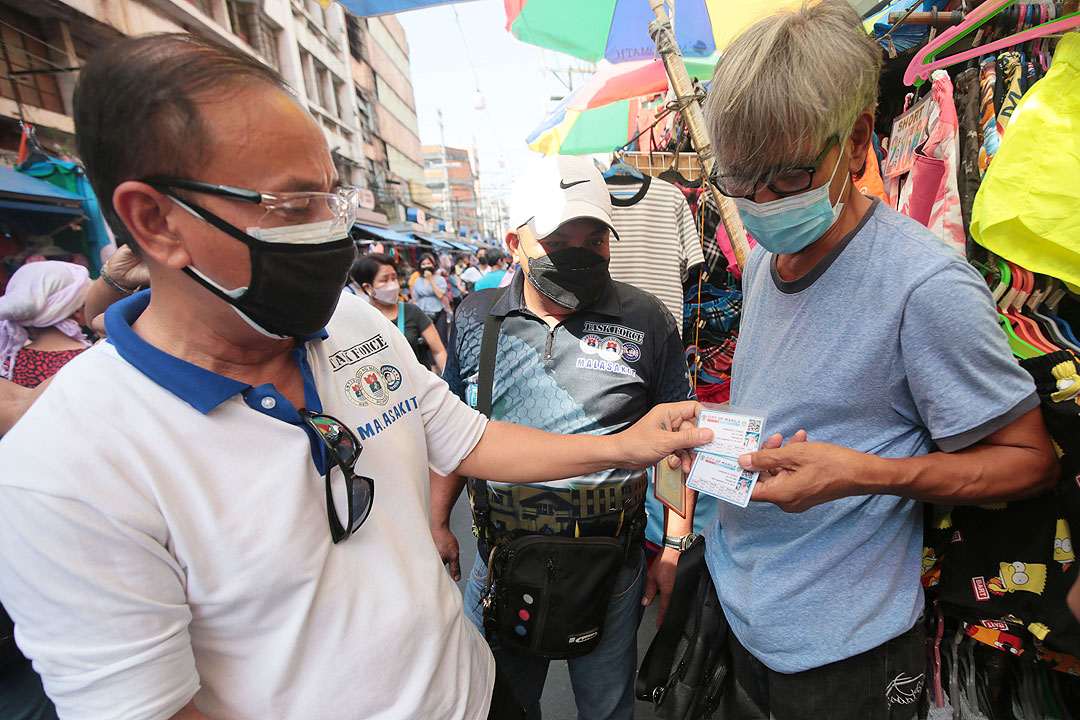
Signs And Wonders
By Diwa C. Guinigundo

With the new wave of the Omicron COVID-19 variant and the subsequent upgrades in alert levels and their impact on mobility and business activities, many think tanks and research groups are going back to the drawing board to recast their growth forecasts for the Philippines this year and the next.
On the global scale, it was the International Monetary Fund (IMF) which initiated a possible reduction in their output forecasts as early as Dec. 3 last year. The Fund Managing Director Kristalina Georgieva was disturbed because Omicron may spread very rapidly, dent confidence, increase uncertainty, and prolong the timeline for overcoming the pandemic.
Three weeks later, The Wall Street Journal reported a number of economists cutting their growth forecasts for the US in 2022, citing cancellations of thousands of flights over the Christmas holiday, sporting events, and Broadway shows. Demand was expected to be crimped mostly by spending on services. While the US restrained itself from imposing strict lockdowns, there were reports that people were voluntarily practicing social distancing, obviously hesitant to eat out and stay in various types of accommodations. Growth and employment are bound to suffer. Goldman Sachs had already reduced its US growth forecast from 4.2% to 3.8% for the year.
Rethinking the growth prospects is not limited to the US. International financial institutions, central banks, and other research institutions in Europe and elsewhere have expressed concern about the rolling disruptions in supply chains in the spring. The less fatal Omicron is capable of triggering a widespread wave of sick-outs and involuntary quarantines. If we think this new variant is less debilitating, we may have to reconsider.
In contrast, at the time the Fund was sounding the alarm in the early part of December, some local economists remained bullish even as they premised their prognosis on the outcome of the new variant. In fact, the Government itself was unusually optimistic that, with only 15 days left of 2021, it decided to even upgrade its growth forecast for 2021 from 4-5% to 5-5% and keep the lofty goals of 7-9% and 6-7% for 2022 and 2023, respectively.
Apart from Omicron’s growth-negative effects on mobility and business activities, economic growth could retreat due to two additional causes. Monetary policy might have to be tightened, and fiscal policy might be constrained by large debt exposure of the Philippine government.
Last week we wrote about another ball in the air of radical uncertainty: the US Federal Reserve decision on the stance of US monetary policy. It has already hinted a possible three one-quarter adjustments for 2022. Should capital flows react against emerging markets including the Philippines, the Bangko Sentral ng Pilipinas (BSP) might be forced to jack up its policy rate to stem the tide which could drain some foreign exchange and lead to peso depreciation. The BSP must have assumed more optimistic currency trends for 2022 and 2023 because the peso was strong for the most part of 2020 and 2021. While good for exports, peso depreciation could also push inflation higher.
There are other potential events that could force the BSP’s hand to tighten. The other day in another broadsheet, there were two news reports on the same page showing the BSP’s assurance that inflation will exceed the 2-4% target only if oil prices surpass $95 per barrel. The other report, by AFP from Hong Kong, quoted Brent crude oil hitting a more than seven-year high due to expected growth recovery. Brent North Sea crude rose to $87.78 per barrel while West Texas International hit $85.43 per barrel. These are uncomfortably close to the BSP’s assumption at which inflation could exceed the targets.
Yet the BSP’s forecasts are first approximation. As it explained, the “scenario analysis considers only the direct effects and does not incorporate any potential second round effects on transport fares, food prices, and wage increases, among others.”
Some supply shocks may also be forthcoming, including higher shipping costs of imports and what many sectors believe to be a fish shortage because of foreign pouching in the West Philippine Sea. Unless oil prices calm down and transport logistics are brought back to normal, import costs will be elevated and inflation can only rise as a result. Unless imports of so-called pelagic fish such as galunggong and mackerel are delivered within the first quarter of 2022, the shortage may persist and again, inflation can be entrenched.
We do not buy the idea that responding to capital outflows and emerging inflation may have to be done at the expense of abandoning support to the real economy. Monetary policy has done its part in supporting the real economy and if the BSP would like to maintain the sustainability of growth, it would have to help the cause of price and financial stability which is the BSP’s primary mandates. There is sufficient monetary space to do it.
The other potential impediment to the growth momentum is a fiscal policy that is constrained by the Government’s already large exposure to both the domestic and external capital markets. As of end-September 2021, outstanding debt of the National Government stood at nearly P12 trillion or more than 63% of gross domestic product. Fiscal deficit to GDP ratio is already overstretched at more than 8% of GDP. It is good the country’s debt spreads continue to be relatively tight but with a 2022 fiscal scenario of more borrowings, more and more credit ratings should be expected to start asking questions.
Raising new taxes to finance additional pandemic response and infrastructure, while necessary, may have to yield to better timing. Instances of corruption, especially during the pandemic, should also be dealt with because they cause distrust of public institutions and ineffective handling of the health crisis.
With smaller elbow room for additional borrowing, and limited ability to raise new taxes to fund health and economic recovery, we may really have to review where we stand.
Foreign investment is hardly an option. The Board of Investments (BoI) recently announced its approval of around P655 billion in pledges in 2021 which was nearly 35% lower than the 2020 level. Only these lower pledges are expected to be realized this year and in subsequent years. This level is also below BoI’s target.
With monetary policy having to pay attention to price and financial stability objectives this year, it would likely continue to provide assistance to the National Government but at less sizeable amount. After all, whatever is extended to the National Government will have to be mopped up by the BSP itself at some cost. Yet BSP lending to the Government is interest-free.
Under Duterte’s watch, the people of the Philippines should be concerned about that headline of one broadsheet the other day: “Government turns to artworks, ‘hot’ cars for extra revenues.”
Diwa C. Guinigundo is the former deputy governor for the Monetary and Economics Sector, the Bangko Sentral ng Pilipinas (BSP). He served the BSP for 41 years. In 2001-2003, he was alternate executive director at the International Monetary Fund in Washington, DC. He is the senior pastor of the Fullness of Christ International Ministries in Mandaluyong.